Let us discuss how you can integrate Razorpay with Google Sheets, ConvertKit, and Zoom. Following this integration, upon receiving payments on Razorpay, you will be able to save payment details in Google Sheets, tag a subscriber in ConvertKit, and add meeting registrants for Zoom meetings automatically.
This automation requires a one-time setup, for which we will use Pabbly Connect.
We will first link Razorpay with Pabbly Connect to capture successful payment details, link Pabbly Connect with Google Sheets to save user details, link Pabbly Connect with ConvertKit to tag subscribers, and at last, connect with Zoom to add meeting registrants.
Step to Automatically Save Successful Razorpay Orders in Google Sheets and ConvertKit and Add Registrants to Zoom Meeting
1. Sign In / Sign Up to Pabbly Connect and Create a Workflow
2. Establish a Connection between Razorpay and Pabbly Connect
3. Correct the Payment Amount Captured
4. Add a Filter to your Workflow
5. Setup Google Sheets as the Action App to Store Payment Details
6. Setup ConvertKit as the Action App to Tag Subscribers
7. Setup Zoom as the Action App to Add Registrants
Step 1:- Sign In / Sign Up to Pabbly Connect and Create a Workflow
A. Sign In / Sign Up
To begin this process, visit Pabbly Connect and create your account by clicking on the ‘Sign Up Free’ button. You can also click on Sign In if you already have an account.
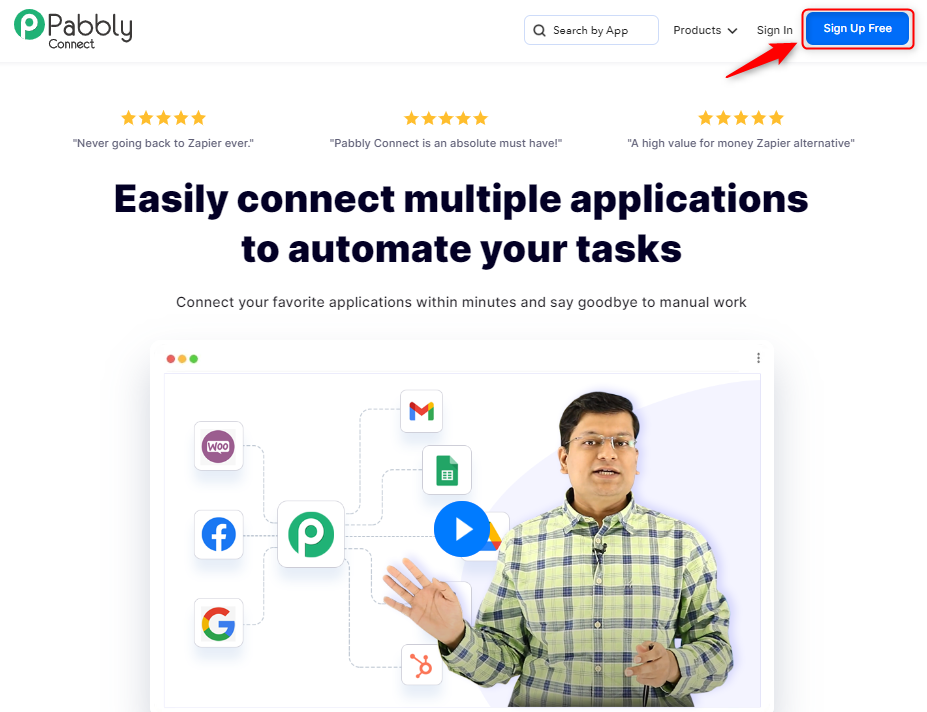
Click on the Pabbly Connect ‘Access Now’ button

B. Create Workflow
To create a new workflow, click the ‘Create Workflow’ button.

Name your workflow, and click on ‘Create’.
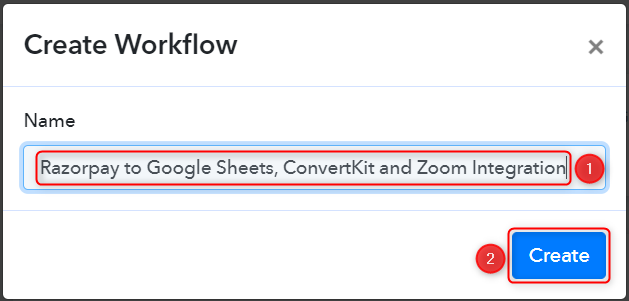
Step 2:- Establish a Connection between Razorpay and Pabbly Connect
We will look at the steps through which we can establish a link between Razorpay and Pabbly Connect. This will help us capture the data for each successful payment.
A. Trigger App
Trigger allows us to choose the application that will receive the data for Pabbly Connect. In our case, it would be Razorpay.
Expand the Trigger Step, choose ‘Razorpay’ as your Action App, and select ‘Payment Captured’ as an Action Event.

B. Webhook URL
A new Webhook URL will get generated. You will use this Webhook URL to create a connection with your Razorpay account. Copy the Webhook URL.
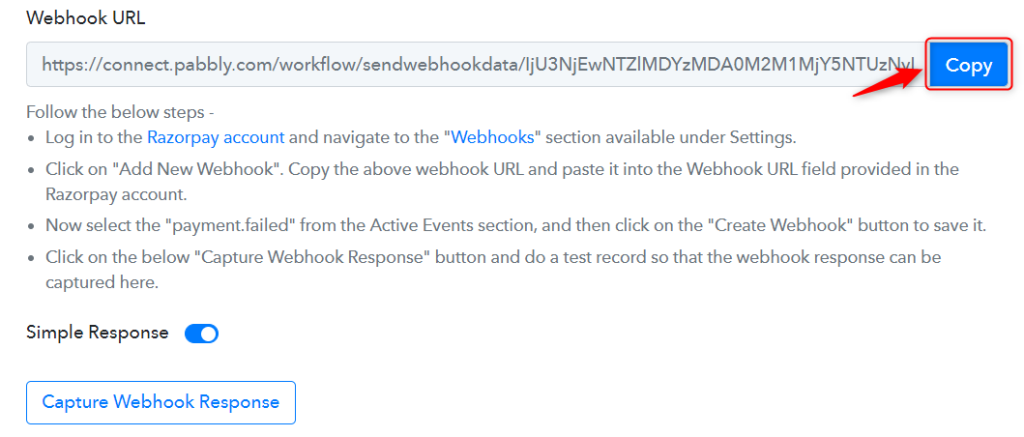
As soon as you Copy the Webhook URL, Pabbly Connect will start looking to capture data from Razorpay, as indicated by the rotating Waiting For Webhook Response button.

C. Connect Razorpay Account
To connect with your Razorpay account, go to your Razorpay dashboard and click on ‘Settings’ > ‘Webhooks’ > ‘Add New Webhook’.
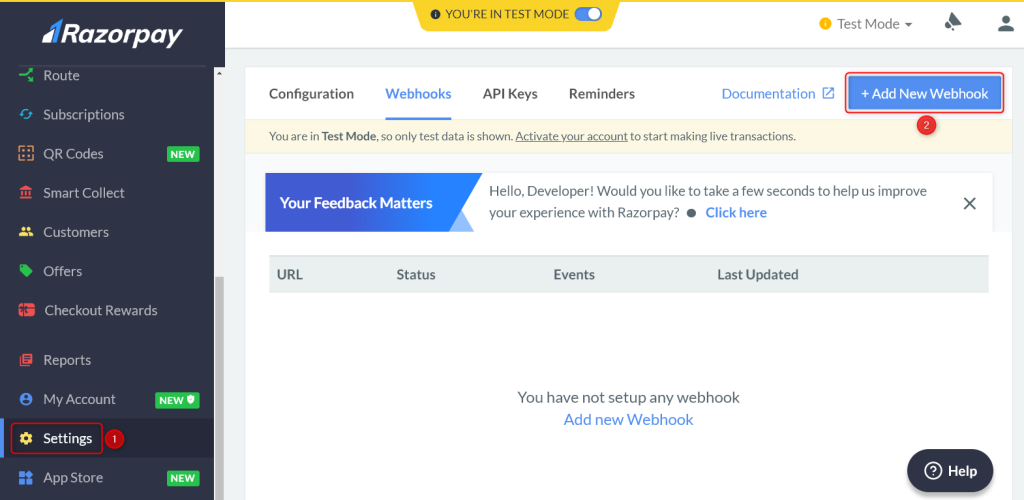
You will be prompted to create a Webhook URL. Paste the Webhook URL we copied earlier, select ‘payment.captured’ as the Active Events, and click on ‘Create Webhook’.

D. Test Connection
Let us now test the connection we just established by making a dummy payment. Open your Razorpay payment form in an incognito tab, fill in the credentials and make a payment.
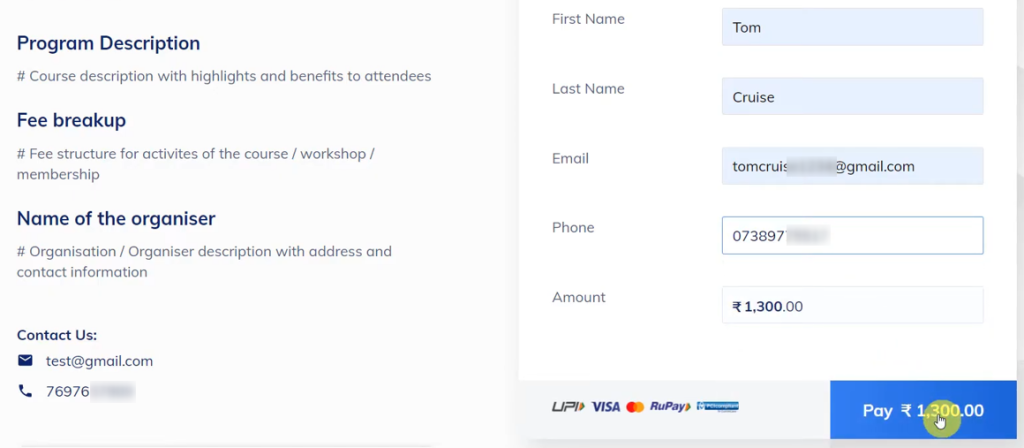

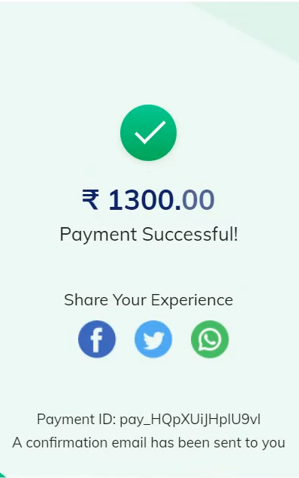
You will receive a successful payment response along with the customer details.

Step 3:- Correct the Payment Amount Captured
The payment amount we captured from Razorpay is incorrect as it contains two extra zeroes. To trim this value, we will add an API to our workflow.
Choose ‘API by Pabbly’ as your Action App, select ‘GET’ as an Action Event, and enter ‘https://forms.pabbly.com/api/trim_amount’ as your Endpoint URL.
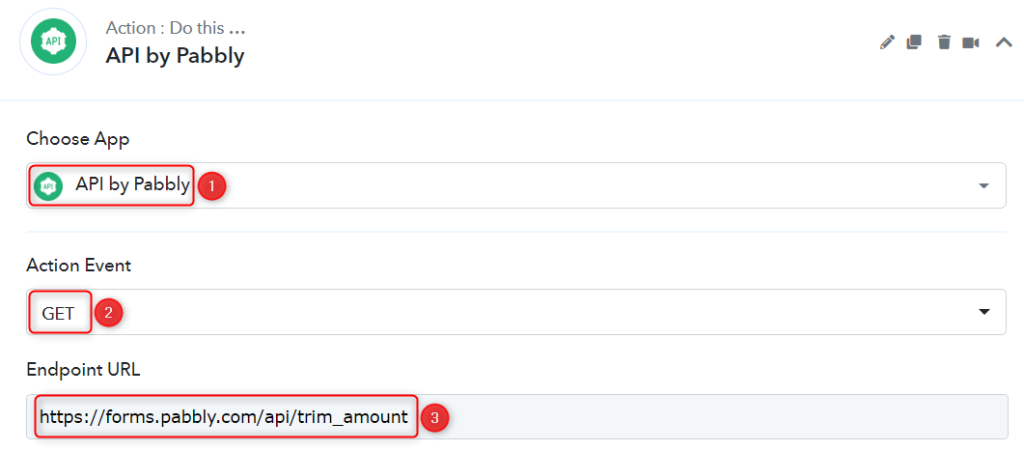
Choose ‘No Auth’ as Authentication and check ‘Set Parameters’. You will be asked for a Label and Value. Give a Label and map the Value from the step above. At last, click on ‘Save & Send Test Request’.
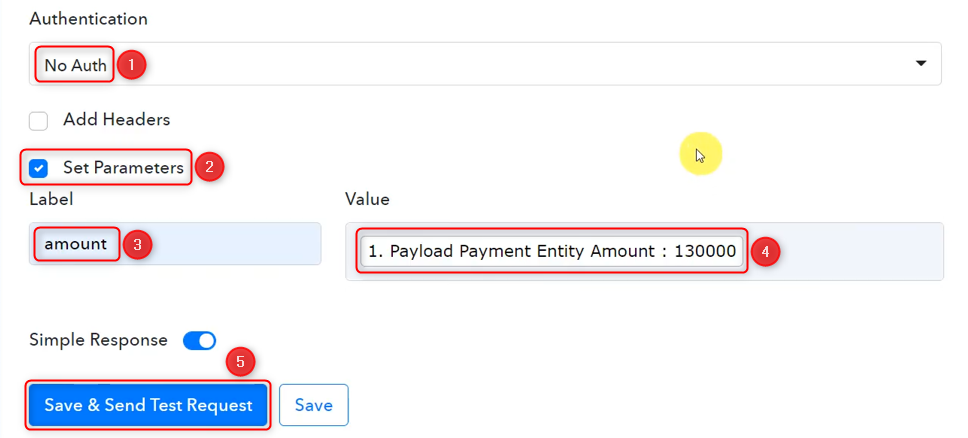
Step 4:- Add a Filter to your Workflow
In Razorpay, we collect payments for multiple purposes, but we want to register only those users who have paid specifically for this course. To do so, we will have to add a filter to our workflow.
Choose ‘Filter by Pabbly’ as the Action App.

Add 2 conditions to your filter, map ‘Payload Payment Entity Status’ and ‘Amount’ as the Select Label, select ‘Equal to’ as the Filter Type, copy and paste the Label Value, and click on ‘Save & Send Test Request’.
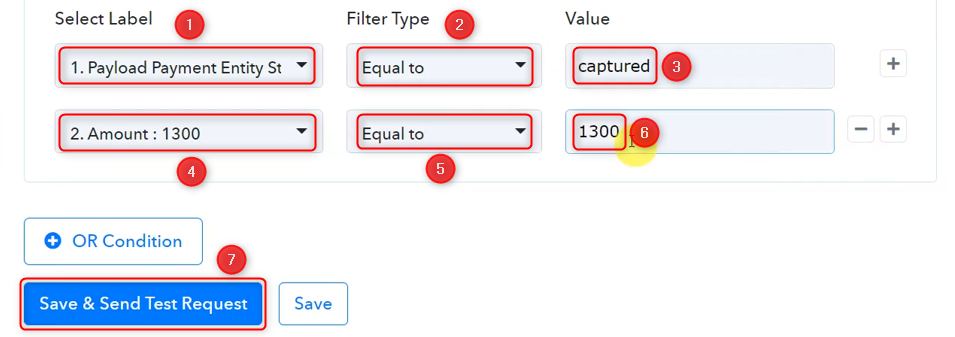
Doing this will ensure that the next step in our workflow will only be executed if the payment is made for this specific course.
Step 5:- Setup Google Sheets as the Action App to Store Payment Details
A. Action App
Action allows us to choose the application that will get executed by the workflow trigger.
We essentially want to store the payment details in Google Sheets. Therefore, Google Sheets will be our Action App.
Choose ‘Google Sheets’ as your Action App. Select ‘Add New Row’ as the Action Event. by doing this we are asking Pabbly Connect to add data in a new row of your spreadsheet. Click on ‘Connect’

B. Connect Google Sheets Account
To connect with your Google Sheets account, select ‘Add New Connection’, and click on ‘Connect With Google Sheets’. Also, grant the authorization.
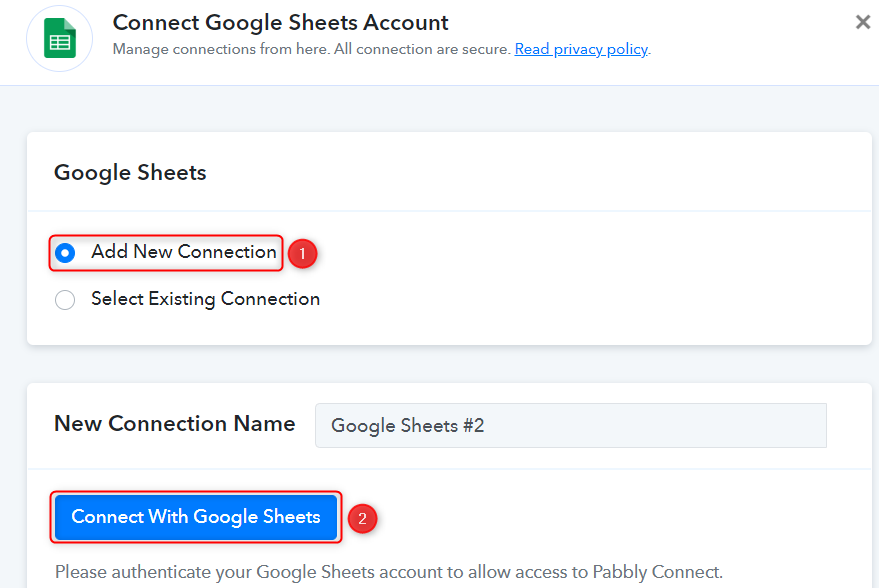
Select the Spreadsheet and Sheet you want to use for storing your data.

As soon as you select your sheet, the columns of this sheet will start reflecting as fields in your Action Step.


C. Map Necessary Fields
Now that you have connected your Google Sheets account, all you need is to map the necessary details from the steps above. Mapping ensures our data remains dynamic and changes as per the received responses.
Map Name from the trigger step.



Similarly, map the other fields and click ‘Save & Send Test Request’.
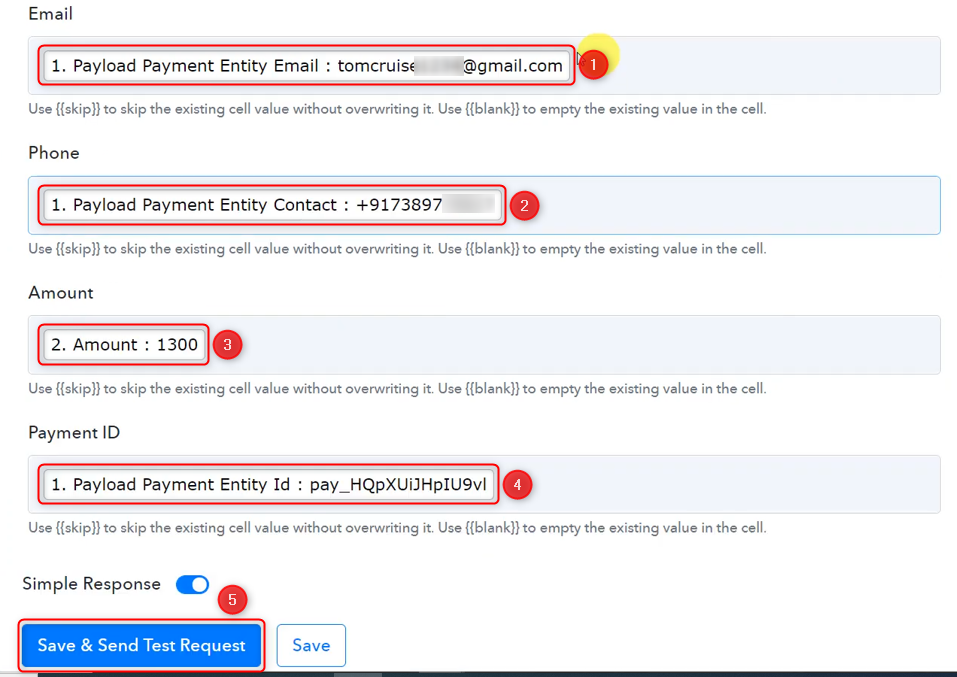
As soon as you click on Save & Send Test Request, your payment details will get stored in Google Sheets.

Step 6:- Setup ConvertKit as the Action App to Tag Subscribers
Since we want to add tags to our ConvertKit subscribers – we will now set up ConvertKit as our Action App.
Add another Action Step to your workflow by clicking the ‘+’ button.

A. Action App
Choose ‘ConvertKit’ as the Action App, select ‘Tag a Subscriber’ as an Action Event, and click on ‘Connect’.
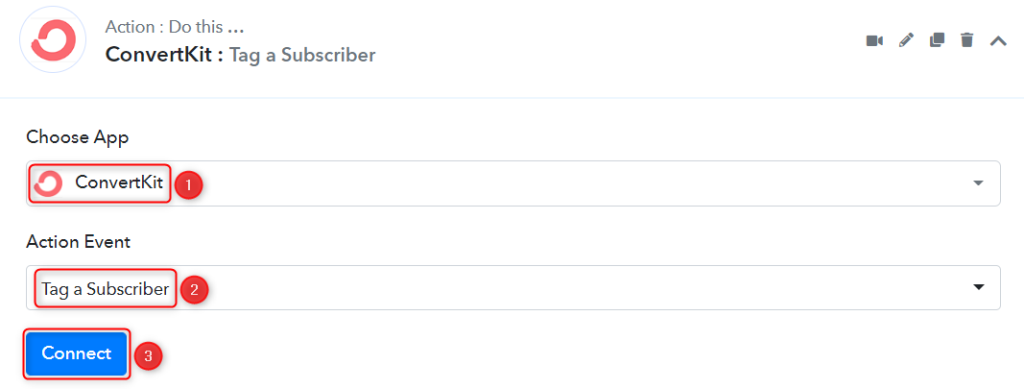
B. Connect ConverKit Account
To connect with your ConvertKit account, select ‘Add New Connection’. You will be asked to enter your API Key and API Secret. Log in to your ConvertKit account, and click on ‘Account Settings’.

You will be redirected to the ConvertKit settings page. Click on ‘Advanced’, and copy Your API Key and API Secret.
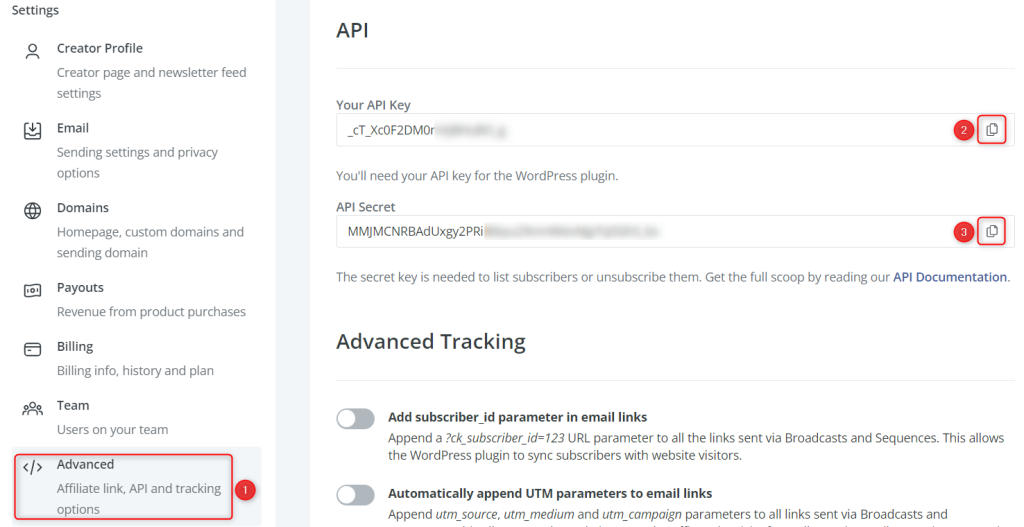
Paste both in their respective fields, and click on ‘Save’.
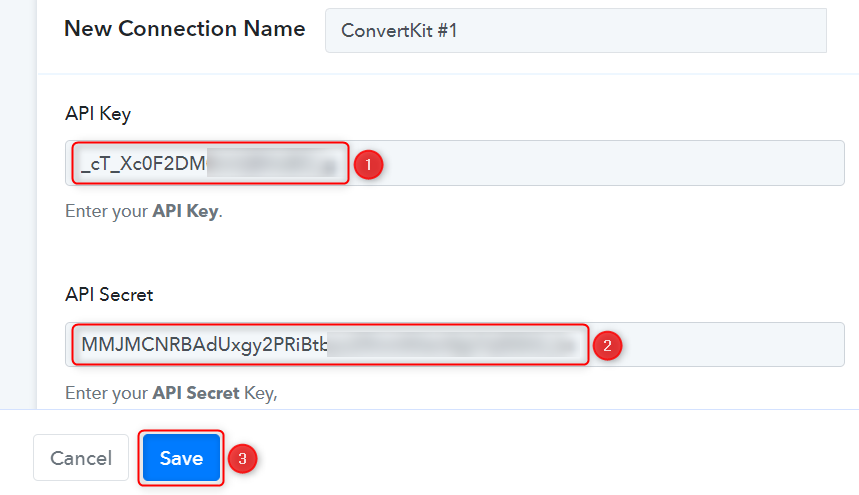
C. Map Necessary Fields
Select Tag, map the Email address and First Name, and click ‘Save & Send Test Request’.

Step 7:- Setup Zoom as the Action App to Add Registrants
We will now set up Zoom as the Action App to register meeting participants.
Add another Action Step to your workflow by clicking the ‘+’ button.

A. Action App
Choose ‘Zoom’ as the Action App, select ‘Add Meeting Registrant’ as an Action Event, and click on ‘Connect’.

B. Connect Zoom Account
To connect with your Zoom account, select ‘Add New Connection’ and click on ‘Connect With Zoom’. Also, grant the authorization.
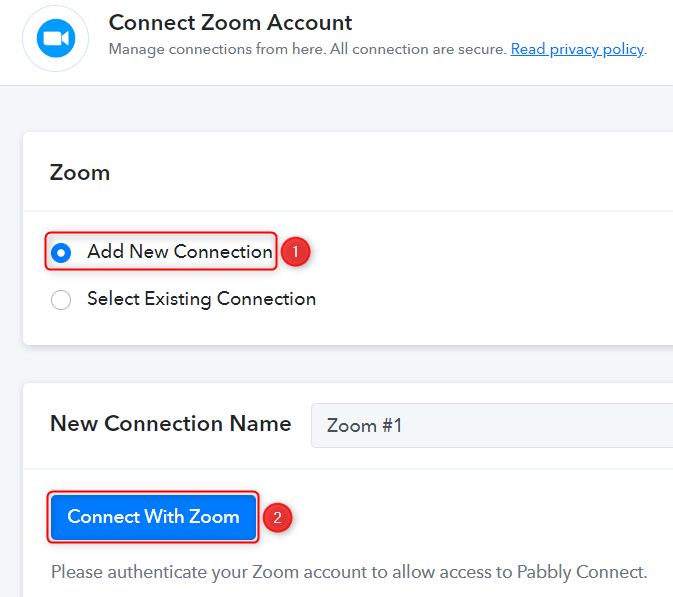
Select the Meeting for which you want to register the participant.

C. Map Necessary Fields
Since we have already captured the payment details from Razorpay, all we need is to map those details from above.
Map the necessary fields from the steps above, leaving the unnecessary ones empty, and click on ‘Save & Send Test Request’.


As soon as you click on Save & Send Test Request, a user will get registered for your Zoom meeting.

Our automation is complete. We have successfully integrated Razorpay with Google Sheets, ConvertKit, and Zoom. Each new Razorpay payment will now be saved in Google Sheets, ConvertKit subscribers will be tagged, and Zoom meeting participants will be registered using the payment details automatically.
You can copy this entire workflow by clicking this link.
Sign Up for a free Pabbly Connect account, and start automating your business
Subscribe to our Youtube Channel for more such automation
For any other queries, visit our forum